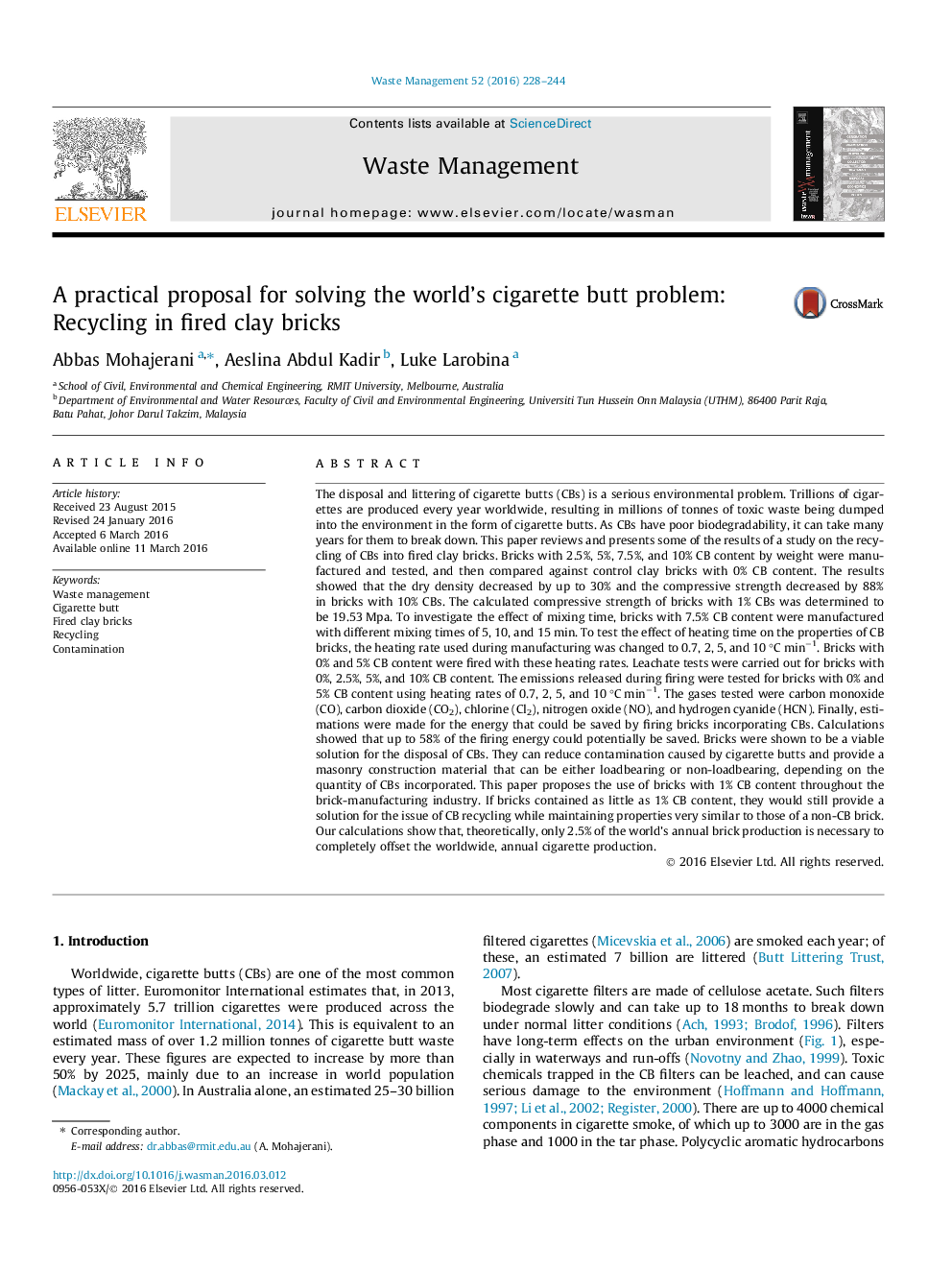| کد مقاله | کد نشریه | سال انتشار | مقاله انگلیسی | نسخه تمام متن |
|---|---|---|---|---|
| 4471245 | 1622634 | 2016 | 17 صفحه PDF | دانلود رایگان |
• Discusses in detail research findings on use of Cigarette Butts in Fired-Clay Bricks.
• Presents an original proposal for solving the cigarette butt waste problem worldwide.
• Inclusion of a small % of CBs in a small % of FCBs would eradicate this pollution.
• 1% CB content has little effect on physical and mechanical properties of FCBs.
• Incorporation of CBs in FCBs reduces energy requirements during firing.
The disposal and littering of cigarette butts (CBs) is a serious environmental problem. Trillions of cigarettes are produced every year worldwide, resulting in millions of tonnes of toxic waste being dumped into the environment in the form of cigarette butts. As CBs have poor biodegradability, it can take many years for them to break down. This paper reviews and presents some of the results of a study on the recycling of CBs into fired clay bricks. Bricks with 2.5%, 5%, 7.5%, and 10% CB content by weight were manufactured and tested, and then compared against control clay bricks with 0% CB content. The results showed that the dry density decreased by up to 30% and the compressive strength decreased by 88% in bricks with 10% CBs. The calculated compressive strength of bricks with 1% CBs was determined to be 19.53 Mpa. To investigate the effect of mixing time, bricks with 7.5% CB content were manufactured with different mixing times of 5, 10, and 15 min. To test the effect of heating time on the properties of CB bricks, the heating rate used during manufacturing was changed to 0.7, 2, 5, and 10 °C min−1. Bricks with 0% and 5% CB content were fired with these heating rates. Leachate tests were carried out for bricks with 0%, 2.5%, 5%, and 10% CB content. The emissions released during firing were tested for bricks with 0% and 5% CB content using heating rates of 0.7, 2, 5, and 10 °C min−1. The gases tested were carbon monoxide (CO), carbon dioxide (CO2), chlorine (Cl2), nitrogen oxide (NO), and hydrogen cyanide (HCN). Finally, estimations were made for the energy that could be saved by firing bricks incorporating CBs. Calculations showed that up to 58% of the firing energy could potentially be saved. Bricks were shown to be a viable solution for the disposal of CBs. They can reduce contamination caused by cigarette butts and provide a masonry construction material that can be either loadbearing or non-loadbearing, depending on the quantity of CBs incorporated. This paper proposes the use of bricks with 1% CB content throughout the brick-manufacturing industry. If bricks contained as little as 1% CB content, they would still provide a solution for the issue of CB recycling while maintaining properties very similar to those of a non-CB brick. Our calculations show that, theoretically, only 2.5% of the world’s annual brick production is necessary to completely offset the worldwide, annual cigarette production.
Journal: Waste Management - Volume 52, June 2016, Pages 228–244
